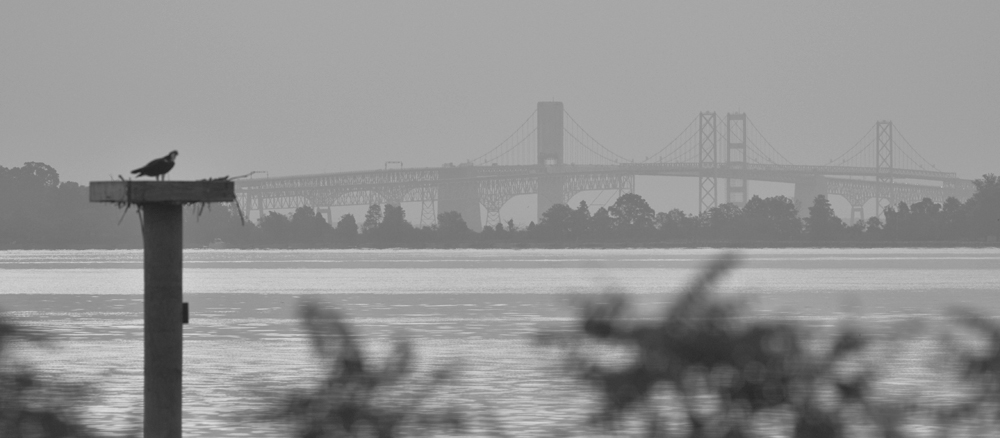A gray and dank day, but I set out anyway to see Jug Bay, which has been on my list for some time. I was lucky enough to join with a bunch of pro birders doing a bi-weekly waterfowl count, and they let me tag along. The conditions (Dark and cloudy) weren’t good for photography, and many of the birds were too far away in any case, but it was a good learning experience. Afterward, I stopped briefly at the Parris N. Glendening Nature Preserve, which is associated with Jug Bay. Birding was truly awful , but a Brown Creeper took pity and posed for me.

A small flock of Tundra Swans flew over. I’ve never seen one before.
Cornell:”True to its name, the Tundra Swan breeds on the high tundra across the top of North America. It winters in large flocks along both coasts, and is frequently encountered during its migration across the continent.”

This shot gives you an idea of the habitat. Look closely, and you’ll see a Great Blue Heron in the middle of the frame.

I have found the Brown Creeper to be particularly elusive. This is only the third I’ve seen, and my best capture yet.
Cornell:”Brown Creepers are tiny woodland birds with an affinity for the biggest trees they can find. Look for these little, long-tailed scraps of brown and white spiraling up stout trunks and main branches, sometimes passing downward-facing nuthatches along the way. They probe into crevices and pick at loose bark with their slender, downcurved bills, and build their hammock-shaped nests behind peeling flakes of bark. Their piercing calls can make it much easier to find this hard-to-see but common species.”




